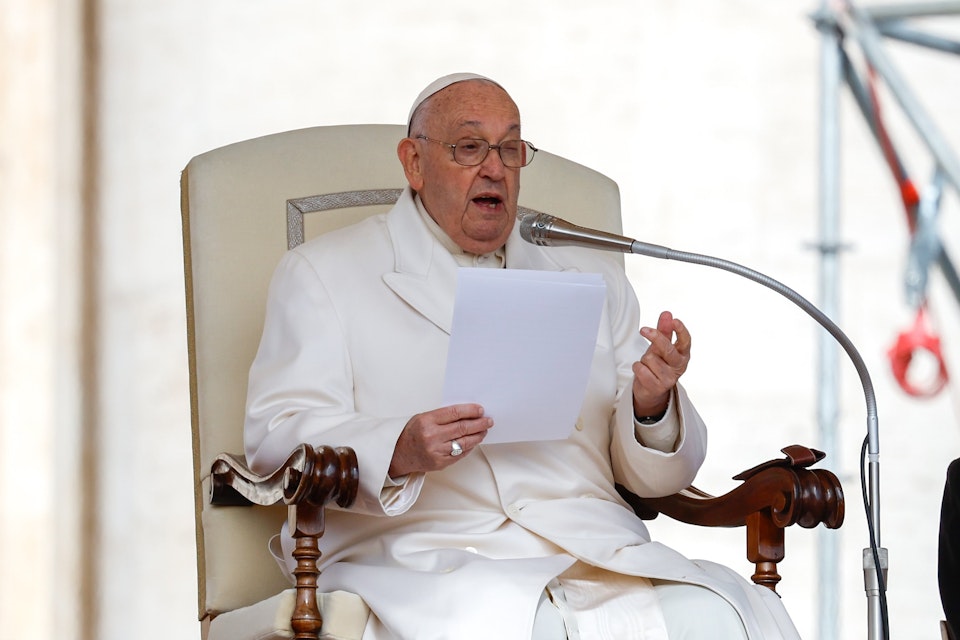 James Faulkner stars as Paul in a scene from in the film "Paul, Apostle of Christ." The Catholic News Service classification is A-II -- adults and adolescents. The Motion Picture Association of America rating is PG-13 -- parents strongly cautioned. Some material may be inappropriate for children under 13. (CNS photo/Sony Pictures)
James Faulkner stars as Paul in a scene from in the film "Paul, Apostle of Christ." The Catholic News Service classification is A-II -- adults and adolescents. The Motion Picture Association of America rating is PG-13 -- parents strongly cautioned. Some material may be inappropriate for children under 13. (CNS photo/Sony Pictures)  Fr. Cassidy
Fr. CassidyIn seeing this film, the viewer learns of Christ’s impact upon Paul’s life and learns of Paul’s loving faithfulness to Christ even as he awaits martyrdom as a chained prisoner in Nero’s Rome. The central contribution of Andrew Hyatt’s film emerges from its depiction of Paul’s uncompromised affirmation of the love of Christ even as his martyrdom nears.
As the film opens, St. Luke, a physician (James Caviezel), is in Rome at the side of St. Paul (James Faulkner). A Christian couple, Priscilla and Aquila (Joanne Whalley, John Lynch) and other members of a beleaguered Christian community are in a basement-like setting proximate to Paul’s prison.
In addition, a Roman Prefect (Olivier Martinez) supervises Paul’s imprisonment and keeps alert to the comings and goings of these other Christians.
It is important to distinguish between the historical plot line of the film and sub-plots within the film that are unhistorical. Paul’s conversion and his enduring faithfulness to Christ constitute the film’s main plot. More will be said below regarding this central plot line.
Various sub-plots provide color and texture, but their fictional character must be recognized. For example, the film’s portrayal of a violent uprising against Nero by a faction of the Christian community is fictional. Also fictional is the gentle spousal conflict between Priscilla and Aquila about remaining in Rome or forsaking the capital for another ministerial setting.
Three sub-plots involving St. Luke are also unhistorical. There is no basis for the film’s portrayal of Luke being cast into the group awaiting martyrdom at the colosseum as a consequence of his visits to Paul’s prison cell.
Also fictional is that the Roman prefect released Luke from his scheduled martyrdom because Paul reported that Luke was the best hope for healing the prefect’s daughter. That Luke’s successful operation upon this young girl then influenced the prefect to reunite Luke with his beloved Paul is also poetic license.
The film’s most biblically grounded scenes are those that portray Paul as a brutal persecutor of Christians and those that portray the sovereign intervention of the risen Jesus to convert Paul from persecutor to apostle.
These scenes occur as flashbacks after the film is well underway. In his own memory, Paul is depicted participating viciously in the stoning of Stephen. Further, an enraged Paul brutally hunts down male and female disciples of Jesus.
Travelling on the road to Damascus, Paul is struck to the ground by the blinding sovereign light of Christ Jesus! Here Wyatt is at his best. Paul cannot make sense of what has impacted him. He flails at clumps of mud on the ground. He hears the words, “Saul, Saul, why do you persecute me?” He is hardly able to answer, “Who are you Lord?”
By Jesus’ continuing revelation, Paul is then guided to the care of Ananias, a disciple of Christ in Damascus. In a scene of exquisite tenderness, Ananias reaches out to Paul, enabling Paul’s sight to be restored.
As a result of Christ’s direct interventions, Paul has thus been “flipped” from persecutor to apostle. The film largely prescinds from Paul’s intervening years of apostleship, years in which he bonded with Priscilla and Aquila and also with Luke. Instead, Hyatt returns his viewers to Paul’s situation as Christ’s chained prisoner in Rome.
The film’s apex occurs when word of the violent uprising by a small minority of Christians is brought to Paul. Such an uprising lacks any historical basis. Nevertheless, Paul is never more the Apostle of Christ than when he replies to this presumed development with extended words concerning love.
Blending elements from 1 Corinthians 13 and Colossians 3, Hyatt’s Paul responds that evil cannot be met with arms but only with love. He emphasizes that there is no other way than love. This is Paul at his finest. For Paul, there is no other way than the love of Christ! He himself experienced the surpassing love of Christ when he was the vicious enemy of Christ’s disciples.
The time for Paul’s beheading is now at hand. He is fully at peace within Christ’s abiding love for him and in his own love for Christ. The memorable words of Philippians 1:21 are now on Paul’s lips: “For me to live is Christ, and to die is gain.” Paul is ready to proceed with serenity toward his beheading, the brutal yet inspiring final scene of this remarkable film.
Fr. Richard J. Cassidy is professor of Sacred Scripture at Sacred Heart Major Seminary. He has authored “Paul in Chains: The Impact of Roman Imprisonment upon the Letters of Paul.”









